KERALA
KNOWN and remembered as the God’s own country, visiting Kerala, a flourishing state in south India can be every tourist’s dream, be it from any foreign country or from India. This state has a wide range of traditional festivities during the entire year. These festivals include the different regions of the state and its citizens. People from the entire state of Kerala come together to honor these historic events, and the entire area is well illuminated, showing an aura of festivities. Kerala is well-known for its historic culture, its cuisine, as well as for its diverse range of tourist attractions. Hinduism, Christianity, and Islam have all had an impact on Kerala’s rich culture. These events provide a look into the state’s rich history. Kerala is also home to a variety of temple festivities that last several days. Let us have a close look of these festivities.
- Thrissur Pooram-
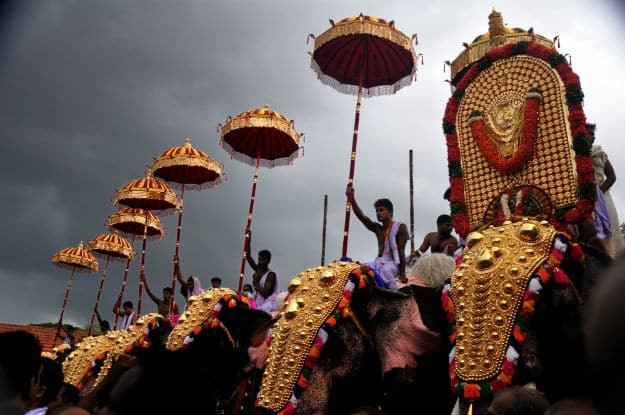
Thrissur Pooram is one of Kerala’s most important religious celebrations. Pooram is an annual event that takes place on the day when the moon is visible with the star Pooram. And Kerala’s Thrissur Pooram is the mother of all poorams.
The festivities begin seven days before the main pooram with kodiyettam, or ceremonial flag hoisting. During the event, ten temples from Thrissur and the surrounding area pay their respects to the Vadakkunnathan temple. The sight of nearly 50 caparisoned elephants moving through the streets, accompanied by drums, is the pooram’s main attraction. Thousands of people throng to this location to witness the mesmerizing sight of the bedecked elephants and the enthralling sound of over 80 drums competing with Nadaswaram. The revelry continues with a dazzling sequined umbrella display. The elephants, as well as the idols of Krishna and the Devi, are returned to the temple after this occurrence. The celebration comes to a close with a spectacular fireworks show that lasts around three hours.
- Onam
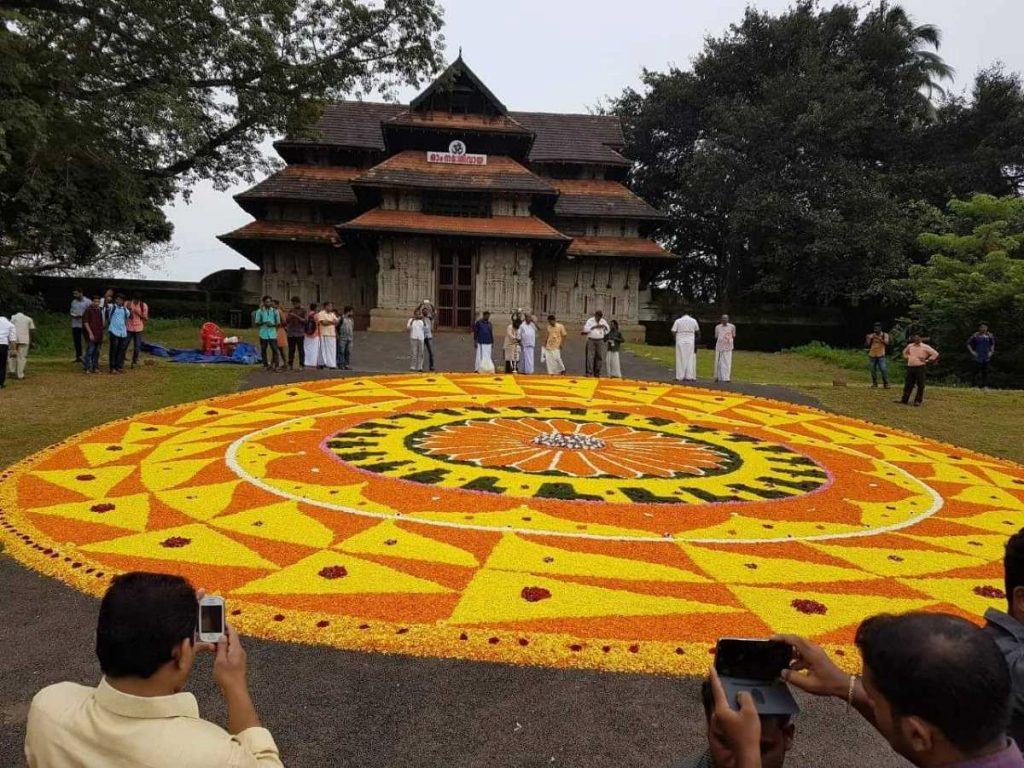
Kerala’s most prominent and well-known celebration is Onam. Onam is a harvest festival that is celebrated with great pomp and fervor. Onam, also known as Thiruonam, is a Malayalam festival that takes place at the start of the month Chingam. Onam is a far bigger event in Kerala celebrated with a lot of pomp and show.
Onam is celebrated on four days. Pookalam, an exquisite floral arrangement, is used to decorate homes, offices, and shops. People go shopping, exchange gifts, and pay visits to temples. Cultural activities such as Atthachamayam, Pulikali, boat races, Kummati kali, and tug of war are part of the ten-day celebration.
There is a lot gastronomy attached to this festival. Around 26 dishes are prepared and served on a banana leaf. Attending an Onam Sadya is a fantastic way to learn about the state’s culture through its cuisine.
- Theyyam Festival
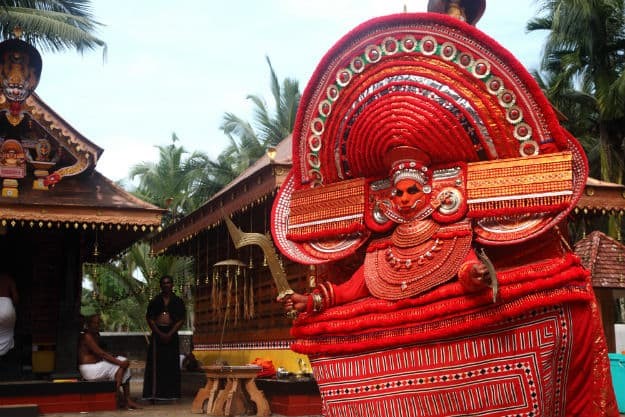
Theyyam is a prominent celebration in Kerala’s North Malabar region, particularly in the Kolathunadu area. This celebration is held between December and April. It is a type of worship that incorporates typical art and fold dancing. Theyyam dances come in nearly 400 different varieties. Some of the best Theyyam performances include Wayanad Kulaven, Muchilottu Bhagavathi, Raktha Chamundi, and Kari Chamundi.
Theyyam dancers, who are from the lower caste, dress up as deities for the dance or invocation. The community shrine is usually the setting for the sacred dance. Theyyam is also used in households as a sort of ancestor worship.
Face painting comes in a variety of patterns, some of which are known as Prakkezhuthu, Kozhipuspam, Kattaram, and Vairadelam. The dancing is followed by the distribution of Prasad (turmeric powder), which is presented as a blessing sign.
ANDHRA PRADESH
Just like most of the south Indian states, Andhra Pradesh too has a rich cultural legacy, which is reflected brilliantly in its festivals and other attractions. Festivals are deeply ingrained in the state’s culture and are enthusiastically celebrated. The majority of the festivals held here are religious, while others are hosted by the Andhra Pradesh government to promote tourism. A list of Andhra’s most well-known festivals follows.
- Ugadi
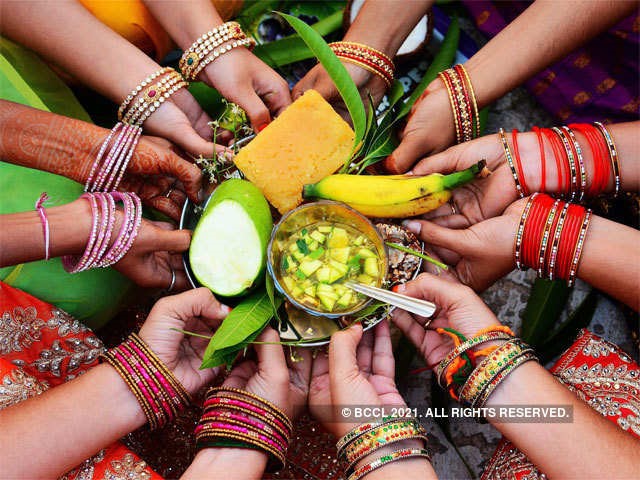
Marking the start of the Telugu New Year (March/April), Ugadi falls on the same day as the Maharashtrian New Year, Gudipadwa. It is essentially a private gathering of family for a feast. The making of the traditional Ugadi pachadi (pickle), which is made with raw mangoes, neem blossoms, pepper powder, jaggery, and tamarind, is the most important Ugadi custom. Sweet, sour, salty, bitter, tangy, and spicy are the six flavours provided by the various ingredients. This range of flavours represents the importance of striking the correct balance in all of life’s events, favourable and negative. Panchanga sravanam – the reciting of the astrological forecasts for the coming year – is another prominent ceremony undertaken during Ugadi. Expensive meals, as with other festivals, are a major element of the festivities.
On this day, folks put on new clothes, adorn their homes, and cook delicacies. The unique dessert made on this day is Purampoli or Bhakshya. Mango leaves (named Torana) are also used to construct festoons that are hung on the house’s doorways.
- Pongal
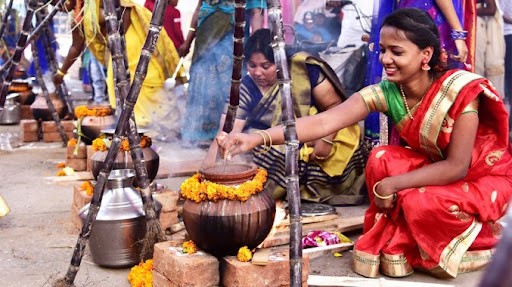
Pongal is one of the state’s most well-known festivals which is held every year during the month of January. It is a harvest festival in which thanks are given to God, animals, and Mother Nature for their assistance in crop growth. Pongal is a four-day festival that includes Bhogi Pongal, Surya Pongal, Mttu Pongal, and Kaanum Pongal. On the celebration, sweet rice known as ‘Pongal’ is prepared. People rejoice by visiting each other’s houses and the young children are blessed for their health and for their long life.
The Vatel Hotel & Tourism Business School is one of the eight schools being operated by the Sushant university and is in exclusive academic collaboration with the Institut Vatel of France and has been declared as the best hotel management institute in south of Haryana. The school thinks, and rightly so, that the best way in which a student can learn is by working on his own on the various allied fields, preparing projects and deriving learning. The above topic has been prepared by our students which is in continuation with the
